86 F. maximum temperature on Friday.
79 F. average high on June 16.80 F. high on June 16, 2016.
June 17, 2010:
The largest single-day tornado outbreak in Minnesota history occurs
with 48 tornadoes across the state. This outbreak would set the stage
for a record breaking tornado year in Minnesota that finished with 113
tornadoes, the most of any state in the US that year. There were three
EF-4 tornadoes and four EF-3 tornadoes in Minnesota. Four tornado
fatalities occurred, which was the highest daily number since July 5,
1978.
Minnesota Outlook Calls For Free (Canadian) A/C
I
wonder if Canadians refer to sweaty hot fronts as "American Air"? I'm
calling my friends in Scottsdale, warning them not to leave their cool,
underground bunkers. The predicted high temperature on Tuesday is 120F
in Phoenix, within a degree or 2 of the all-time record high.
"But it's a DRY HEAT Paul!" they insist rather indignantly. Yeah, so is my oven, but I still don't stick my head inside.
Yes, Arizona is to summer what Minnesota is to winter. At least the old fashioned winters of the 1970s.
According
to Mark Seeley the first half of June was unusually warm, statewide.
Only 1933 and 1988 were hotter. And now it's time for the inevitable
correction.
Get outside this morning; showers and T-storms become
more numerous by afternoon and evening with highs in the upper 70s.
Sunday should be drier but significantly cooler, with PM readings in the
60s. Temperatures mellow a little next week, but no extended,
persistent heat is in sight between now and the 4th of July.
My
semi-educated hunch? Record heat will grip much of the southern USA the
next few weeks. We'll see flashes of heat, but Canada will burp a series
of cooling fronts south of the border. No heatwaves here anytime soon.
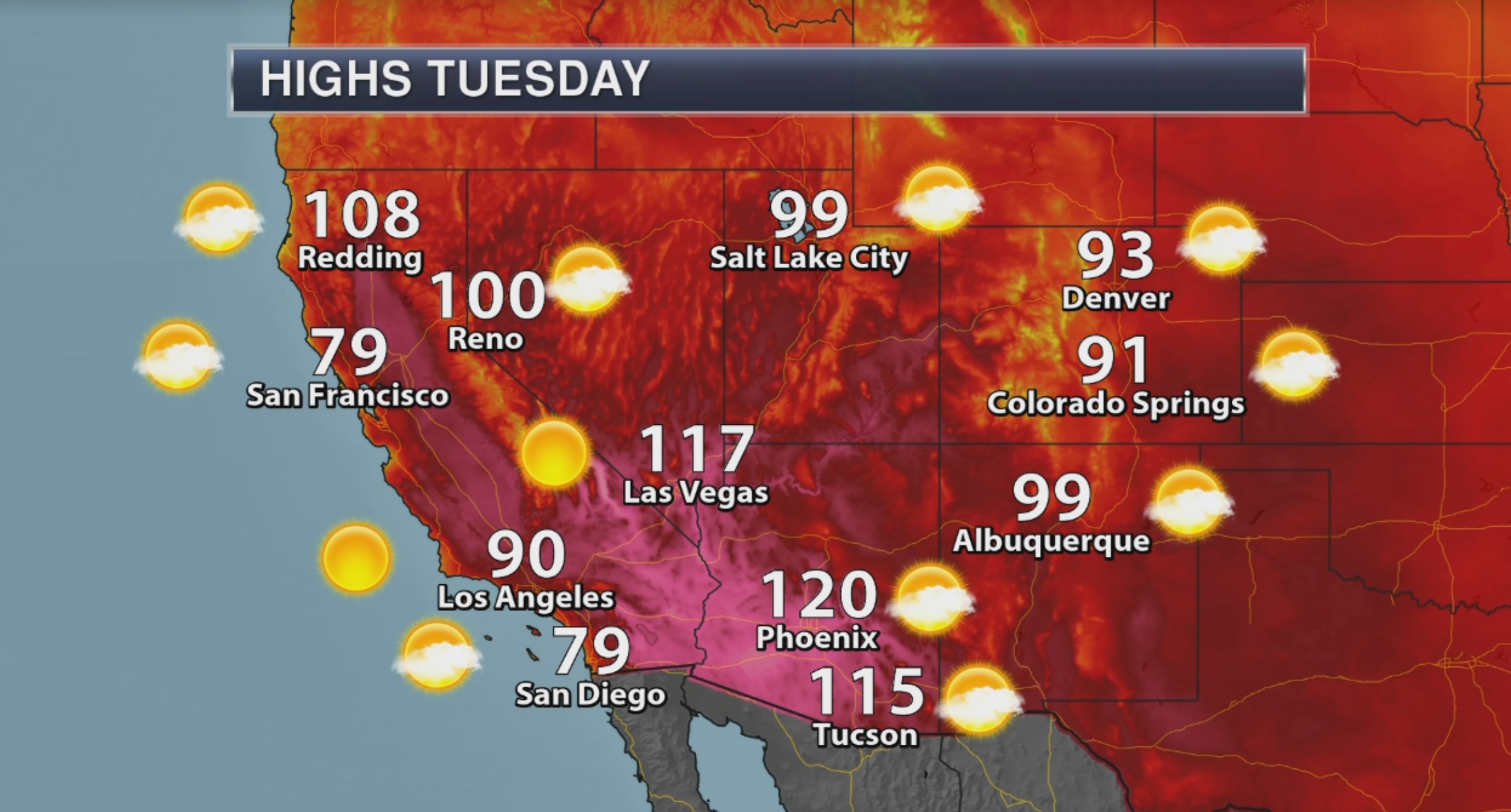 Tuesday Highs
Tuesday Highs. Hotter in Phoenix than Death Valley? Good grief. Be careful out there. Map: Aeris AMP.
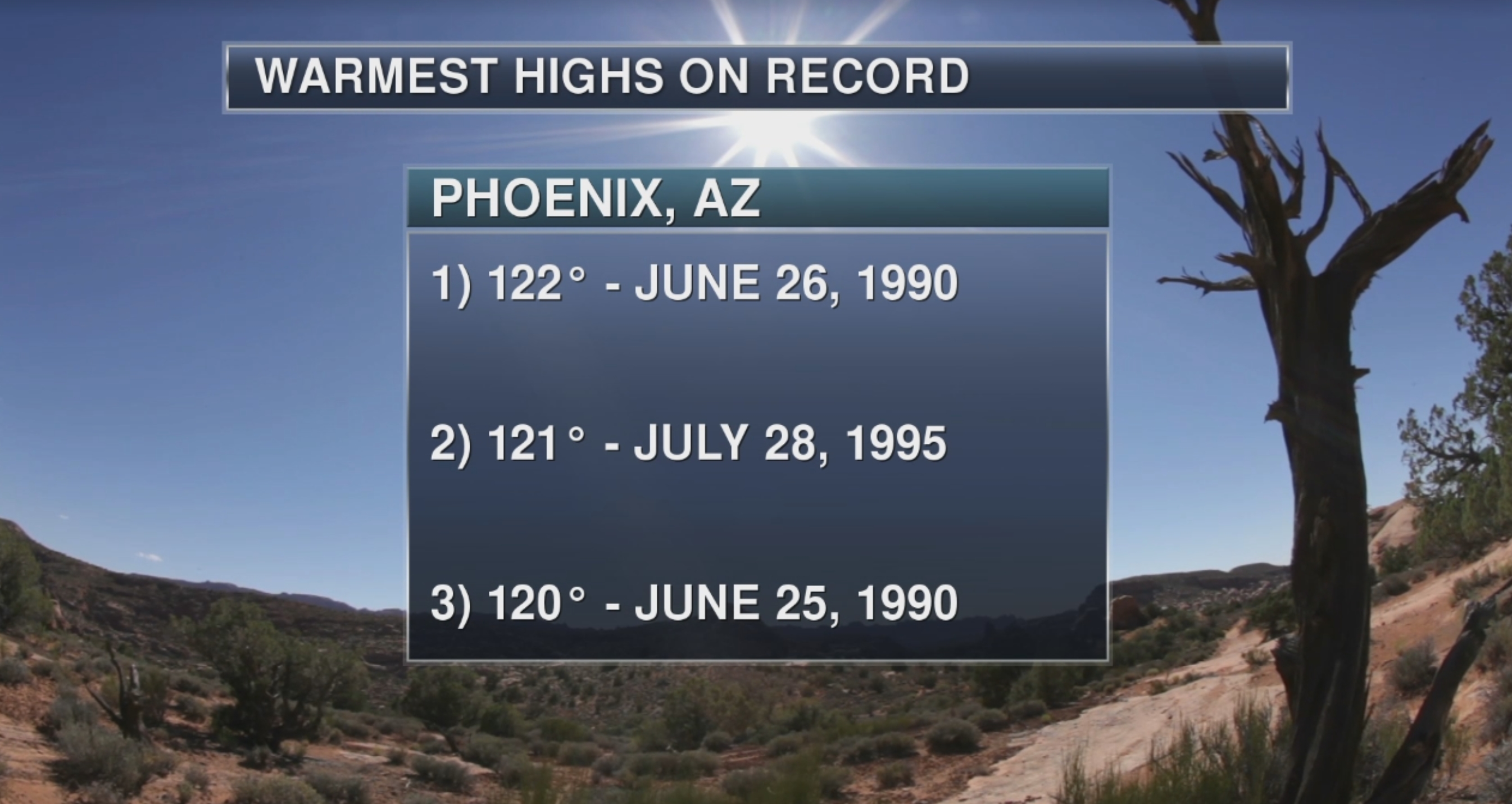 Record Territory
Record Territory.
High temperatures early next week in metro Phoenix will come within a
couple degrees of the all-time record of 122F, set on June 26, 1990.
Waves of Heat.
GFS guidance looking out 384 hours shows the hottest temperatures
(white denotes 90s and 100s) from the Desert Southwest into the central
and southern Plains into next week; a series of cooler fronts taking the
edge off the heat across northern tier states. Temperature animation:
Pivotalweather.com.
Warming Increasing Hot Weather Records Across the USA. Here's the excerpt of an explainer from
Climate Signals: "...
The
science connecting the observed increase in heat waves to climate
change is extensive and has recently advanced even further.
Highlights:
In
a stable climate, the ratio of days that are record hot to days that
are record cold is approximately 1:1. In our warming climate, record highs have begun to outpace record lows, with the imbalance growing for the past three decades. In the last 365 days, there were 4.21 high temperature records for 1 record low in the US..."
Map credit: Aeris AMP.
Saturday Severe Storm Threat.
Keep an eye on Kansas City and Des Moines to Chicago later today as a
few swarms of strong to severe thunderstorms bubble up. Once again a few
tornadoes are likely; expect tornado watches and a few warnings by late
afternoon. Map: NOAA SPC.
Sizzling Heat and Persistent T-storms.
It's a wet forecast east of the Mississippi River with frequent storms,
while dry desert heat envelopes the southwest and southern Plains. The
Pacific Northwest may even go a few days before the next slap of
moisture. 84-hour NAM Future Radar: NOAA and Tropicaltidbits.com.
Predicted Rainfall by July 2.
I'm not (yet) convinced that the Florida Panhandle and southern Georgia
will pick up 8-12" of rain (that depends on whether a tropical system
really does spin up in the Gulf of Mexico next week). As much as 5" of
rain is predicted for Chicago; 3-5" amounts for New England as a series
of Canadian fronts push south of the border.
Tropical Development?
It's way too early to even speculate, but the 00z NAM model does try to
spin up a tropical depression or storm in the Gulf of Mexico early next
week. Confidence levels are about as low as they ever get. Consider
this a desperate attempt to cover my....Doppler....just in case the
forecast verifies.
Early Hurricane Season May Be Brewing Something in the Gulf of Mexico. 4 Things to Know. Meteorologist Marshall Shepherd helps us keep some sense of perspective at
Forbes: "
It
is that time of year. It is hurricane season, and nature seems to know
that as well. As a meteorology professor and scientist, I have been
watching weather models over the past several days, and some have
hinted, as far back as last week, at the possibility of "something
developing" in the Gulf of Mexico. I tend to err on the side of caution
with long-range solutions and let the information evolve. Too often,
models spin up "fantasy" storms at long range so it is important to be
cautious in what is shared. This current threat is now within a time
window that warrants a little more attention. Here are 4 things that you
need to know right now..."
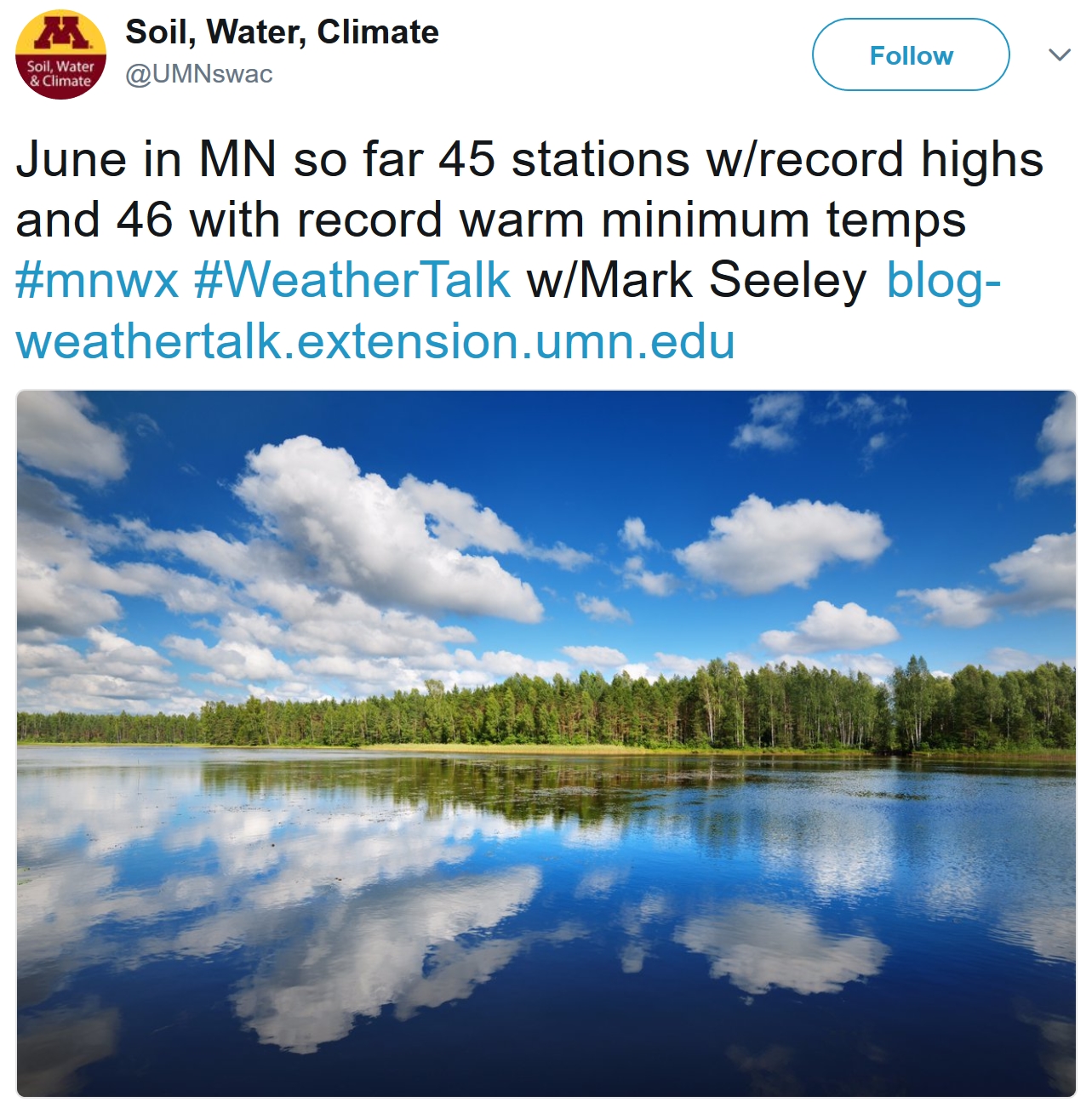 Near-Record Warmth First Half of June.
Near-Record Warmth First Half of June. Like clockwork, Dr. Mark Seeley has details at
Minnesota WeatherTalk: "
In
contrast to May, the first half of June has been unusually warm, near
record-setting in many places across Minnesota. For the Twin Cities
Metro Area the mean temperature for the first half of June has been
about 74.9 degrees F. Only 1976 was warmer, with a mean temperature of
75.1 degrees F. On a statewide basis the mean temperature for the first
half of June was 69 degrees F. Only 1933 (71.4°F) and 1988 (70.4°F) were
warmer. Within the Minnesota climate observation network 45 stations
have reported daily maximum temperature records tied or broken so far
this month, and 46 stations have also reported daily warm minimum
temperature records tied or broken so far. Many places have reported
multiple days with 90°F temperatures, as high as 97 degrees F at
Rosemount and Waseca. MSP set a new record warm minimum temperature on
June 10th with a reading of 77°F, breaking the old record of 73 degrees F
back in 1973. Milan also reported a record warm minimum on that date
with a reading of 77°F. MSP also tied a record high dew point reading on
June 13 with a reading of 74 degrees F..."
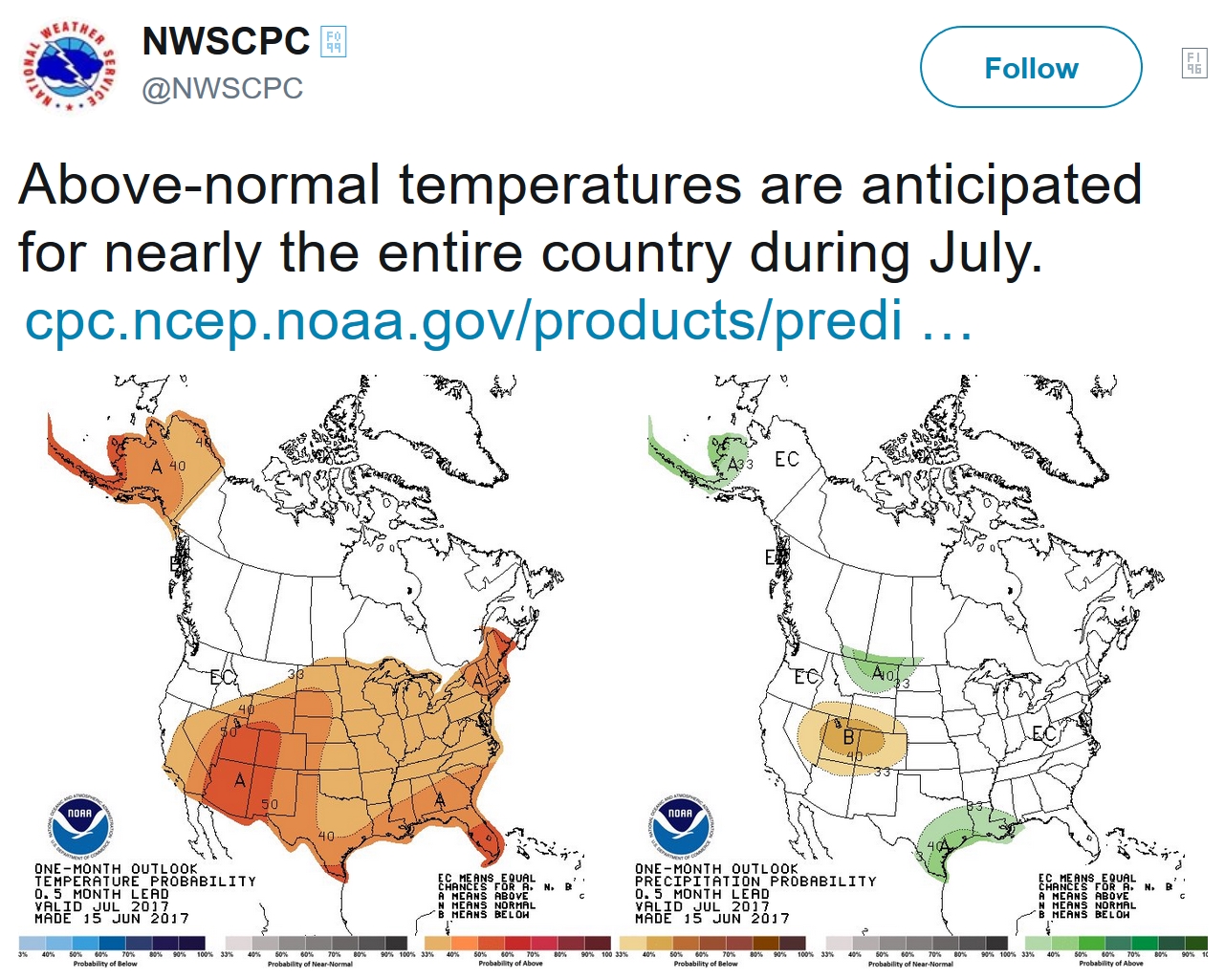 Warmer Than Average July For Most of USA?
Warmer Than Average July For Most of USA? Here is the latest prediction from
NOAA CPC, the Climate Prediction Center, calling for a very warm July (with the possible exception of the Pacific Northwest).
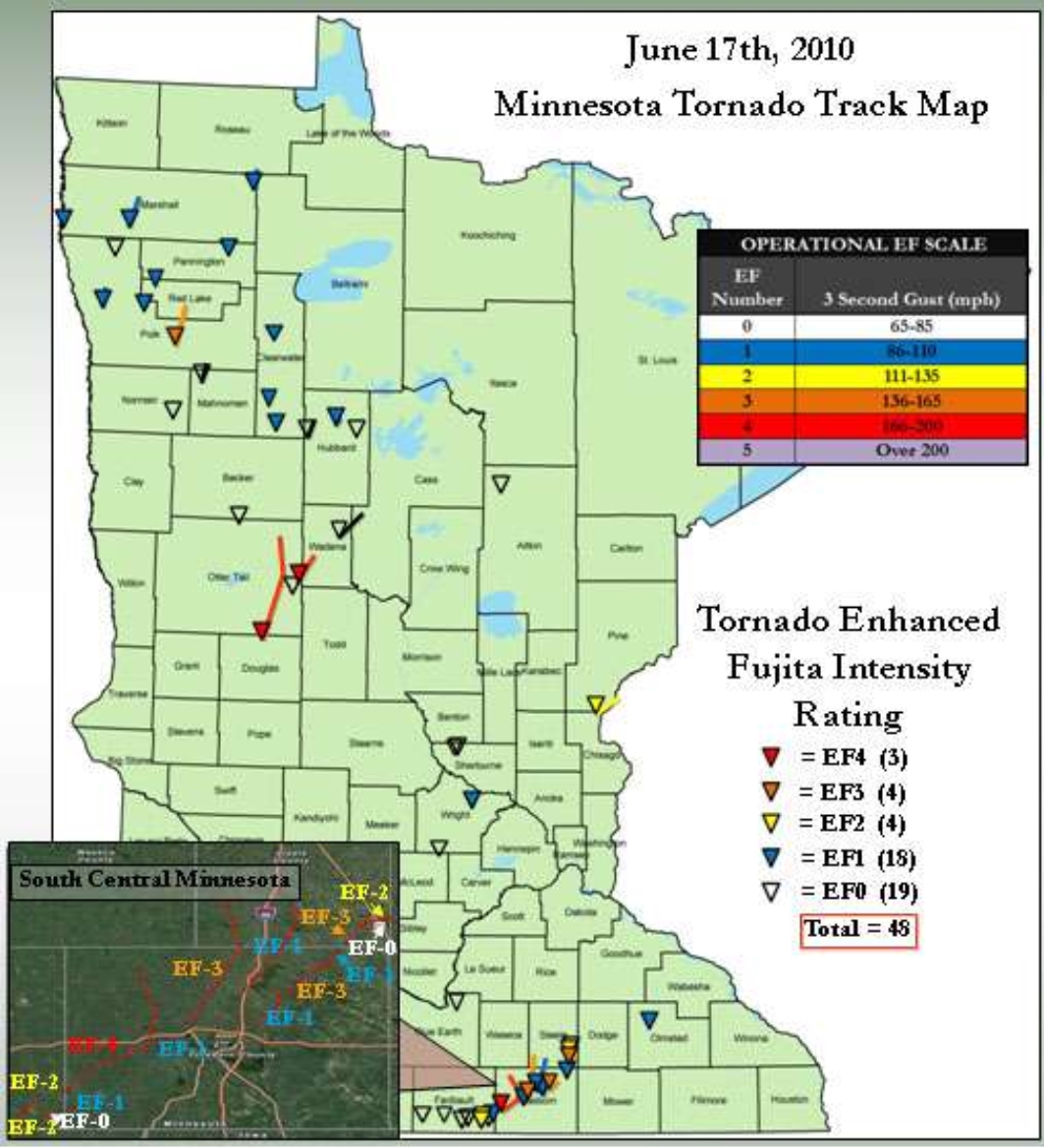 Oklahoma or Minnesota?
Oklahoma or Minnesota?
7 years ago today a swarm of 48 tornadoes strafed Minnesota in a single
24-hour period; 3 of them violent EF-4 strength. 2010 was the year
Wadena was hit. We've been relatively lucky in recent years, but as we
all know, at some point your luck runs out. It pays to stay a little
paranoid, and never let your guard down.
Map above courtesy of the Twin Cities National Weather Service, which has more details
here.
Into the Storm: OSU Researchers Use Drones for Tornado Prediction.
Getting real-time boundary-layer observations from a new generation of
drones may help to provide the high-octane weather data required to take
tornado prediction to the next level. Here's an excerpt from
News OK: "...
Tornadoes
are spontaneous and on a much smaller scale. To predict them,
meteorologists need a precise understanding of the atmosphere between
the ground and the bottom of the storm. Typically, current weather radar
cannot detect activity happening at this level. By getting ahead of the
storm, Jacob can have a drone fly directly into the target area to
measure the pressure, temperature and humidity in this previously
unreachable space. The drone will transmit the data from the sensors to
the controller who can then analyze the data into weather models. This
data could allow tornado warnings to go from 15 minutes to in excess of
an hour while decreasing the overall false alarm rate, ultimately saving
lives..."
Photo credit: "
Research being performed at OSU hopes to improve the metrics for tornado prediction through the use of drones." Photo courtesy of Dr. Jamey Jacob.
Changes to NOAA's Watch/Warning/Advisory Protocol?
Nothing is happening yet, but there are considering streamlining and
simplifying their hazard-alerting system. Here's more from
NOAA: "...
For
decades, the NWS has used the Watch, Warning, and Advisory (WWA) system
to alert users of forecasted hazards. In many ways, the WWA system has
been highly effective in protecting life and property. With that said,
as we have collected feedback during the course of this project, we have
learned that some users find the WWA terms confusing. Also, users are
sometimes confused about how to interpret and distinguish among the
large number of individual WWA “products” (e.g., Wind Advisory, Flood
Watch, Winter Storm Warning). Based
on this initial feedback, and with support from social and behavioral
scientists, NWS is exploring alternatives for more effectively
communicating our hazard messages. The NWS is not making any changes to
the operational system at this time but we are carefully considering a
number of options, as follows:
- Keep the current WWA system as is;
- Make small to moderate changes; or
- Make a transformational change to the WWA system..."
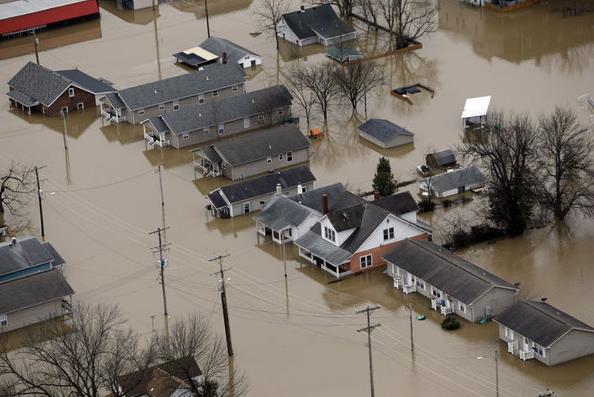 Committee Passes First Round of Flood Insurance Bills
Committee Passes First Round of Flood Insurance Bills. Here's an excerpt of a press release from
The House Committee on Financial Services: "
The House Financial Services Committee met today to
begin consideration of several measures to reform and reauthorize the
National Flood Insurance Program (NFIP), which is set to expire on
September 30, 2017.
“We cannot continue to call on the American taxpayer to bailout a
program that is currently drowning in $25 billion of red ink and suffers
a $1.4 billion annual actuarial deficit,” said Financial Services
Committee Chairman Jeb Hensarling (R-TX). “These bills put the National
Flood Insurance Program on a path toward actuarial soundness where all
will be protected, no one will be denied a policy, all will benefit from
competition, the NFIP will be sustainable, and the national debt clock
will spin a little less rapidly...”
File photo of December 2015 flooding in Missouri: Associated Press.
Mystery of the Missing Noctilucent Clouds. Here's an interesting snippet from
SpaceWeather.com: "...
In
late May 2017, observers in Europe began seeing electric-blue tendrils
snaking over the western horizon at sunset. The summer season for
noctilucent clouds (NLCs) was apparently beginning. Normally, the
strange-looking clouds surge in visibility in the weeks immediately
after their first sighting. This year, however, something mysterious
happened. Instead of surging, the clouds vanished. During the first two
weeks of June 2017, Spaceweather.com received ZERO images of NLCs --
something that hasn't happened in nearly 20 years. Where did they go?
Researchers have just figured it out: There's been a "heat wave" in the
polar mesosphere, a region in Earth's upper atmosphere where NLCs form. Relatively warm temperatures have wiped out the clouds..."
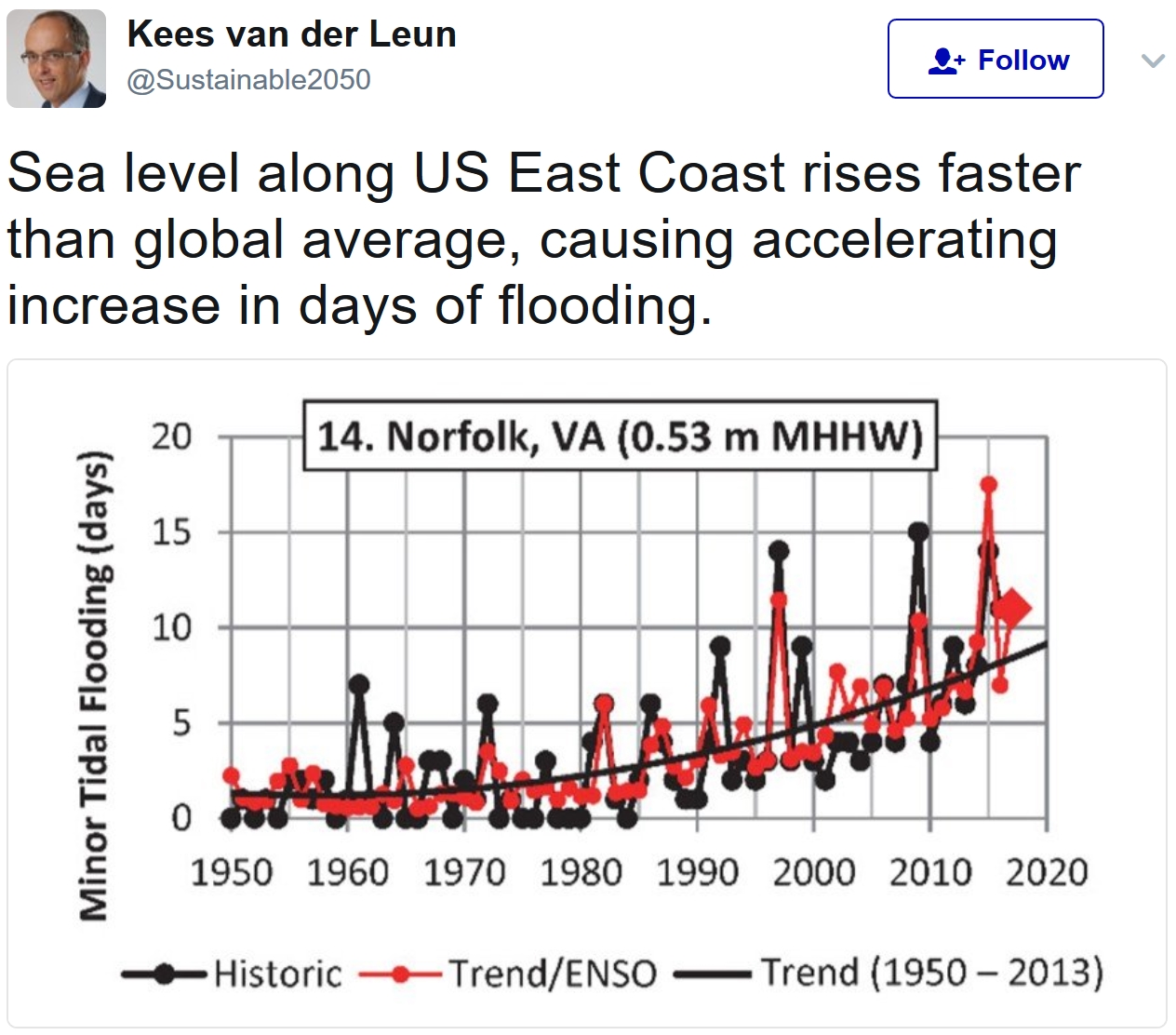
ASCE Gives U.S. Infrastructure a D+. Details via
Business Insider: "
America's infrastructure is in dire need of repairs. According to the American Society of Civil Engineers' 2017 Infrastructure Report Card,
which is published every four years, US infrastructure gets a D+ grade.
It got the same grade in 2013. The ASCE estimates the US needs to spend
some $4.5 trillion by 2025 to improve the state of the country's roads, bridges, dams, airports, schools, and more. The
report breaks down the state of infrastructure in 16 different
categories. Here's a look at each category's final grade, according to
the organization..."
Photo credit: "
An
aerial view of the damaged Oroville Dam spillway is shown. Dams in the
US are aging. In fact, the average age of of US dams is 56 years." Dale Kolke / California Department of Water Resources via Reuters.
Asia's Rivers Send More Plastic Into The Ocean Than All Other Continents Combined.
Quartz reports: "
Every year, millions of tonnes of plastics are produced and trashed, with some ending up in the sea, and gobbled up by tiny fish.
Even though countries don’t report on how much plastic they are
flushing, a recent study suggests that around 86% of the plastic running
through rivers was coming from a single continent—Asia. An estimated
1.15 to 2.41 million tonnes (1.27 to 2.66 million metric tons) of
plastic waste enters rivers every year, around one-fifth of the total plastic in the sea from coastal populations worldwide, according to a study published in Nature on June 7..."
Photo credit: "
Heading out."
(EPA/Sebastiao Moreira)
Renewables Provided a Record 10% of U.S. Power in March.
Bloomberg Markets has details: "
Wind
and solar energy accounted for more than 10 percent of U.S. power
generation for the first time in March following a record year for clean
energy development. Wind farms in Texas, Oklahoma and elsewhere
accounted for 8 percent of electric generation, while residential and
commercial solar installations provided about 2 percent, the U.S. Energy Information Administration said in a statement Wednesday..."
Forget Coal, Solar Will Soon Be Cheaper Than Natural Gas Power. Look at the trends, argues a post at
ThinkProgress: "
The staggering drop in the cost of clean energy has already upended the global power market
over the past two decades — and that trend will only continue for the
next two decades, according to new analysis from Bloomberg New Energy
Finance (BNEF). As a result, renewables will capture the lion’s share of
the $10.2 trillion the world will invest in new power generation by
2040, BNEF projects in its annual New Energy Outlook 2017 report. Despite years of plummeting prices
for renewables, BNEF projects that over the next two decades, the cost
of solar power will still drop another two-thirds, onshore wind costs
will be cut nearly in half, and offshore wind costs will drop a stunning
71 percent..."
At Xcel Energy, We'll Stay on a Clean Energy Path. My thanks to Xcel Chairman and CEO Ben Fowke for brightening my day; here's an excerpt of an Op-Ed at
Star Tribune: "...
Power
companies like Xcel Energy are leading the way toward a clean energy
future. As an industry, electric utilities already have reduced carbon
emissions by 25 percent since 2005. The Paris agreement would have
required a reduction of 26 to 28 percent by 2025. Our industry is
reducing carbon emissions and doing so 10 years in advance of
international agreements. All CEOs are proud of their companies, and I
am no exception. Last year, Xcel Energy achieved a 30-percent reduction
in carbon emissions, and we are on track to reduce our emissions by 45
percent by 2021 companywide. Our reductions are the result of remarkable
changes in how we produce energy. Back in 2005, 9 percent of our energy
came from renewable sources. In 2016 it was 25 percent, and by 2021 we
project it will be more than 40 percent..."
Photo credit: "
Xcel Energy's renewable energy sources include the 100-megawatt North Star Solar project near North Branch, Minn." Brian Peterson - Star Tribune file.
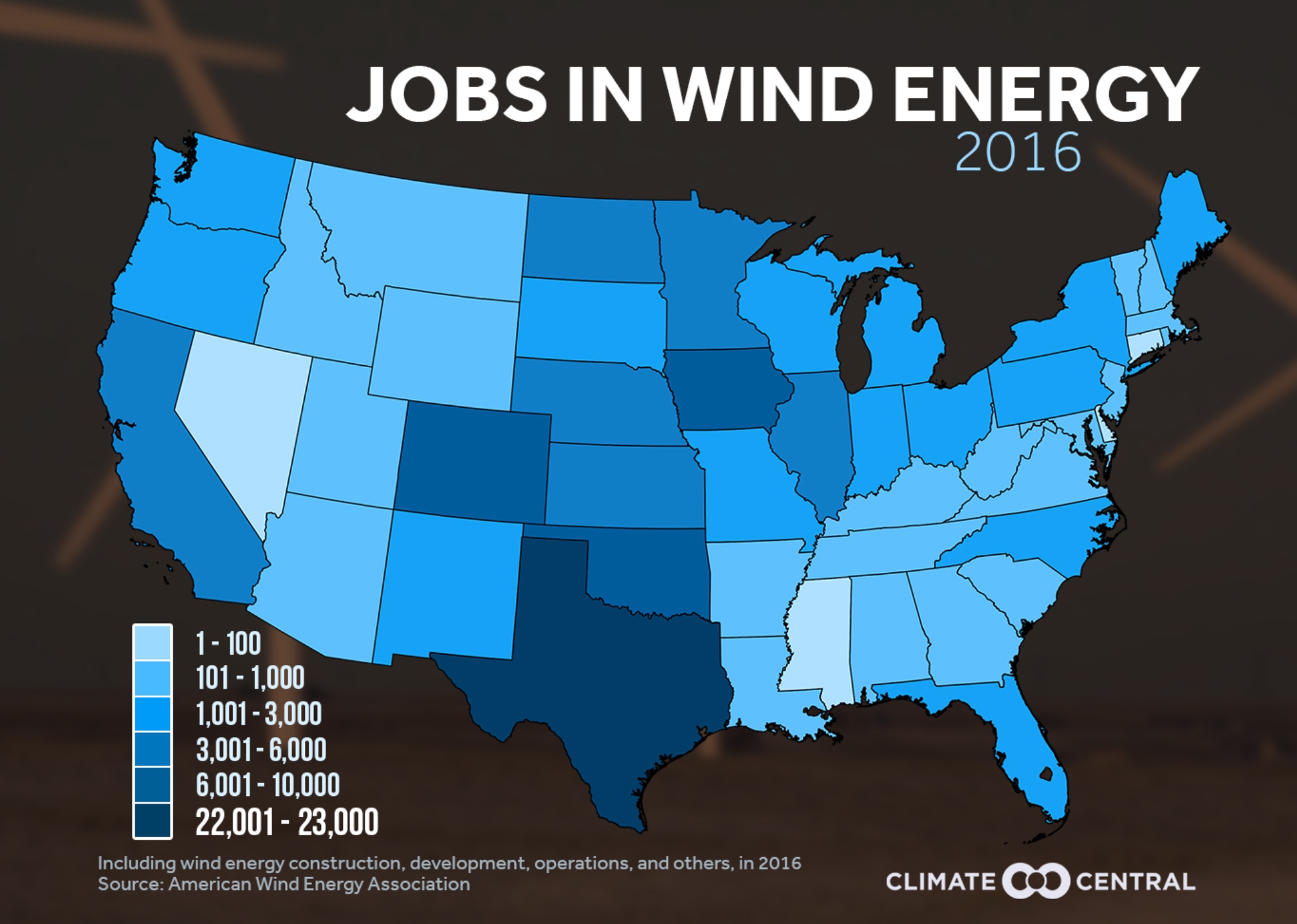
How Electric Vehicles Can Help Cities Like Houston Fight Climate Change. Here's a nugget from an Op-Ed at
The Houston Chronicle: "...
Thirty cities, including New York, Los Angeles, Chicago and Houston, are seeking bulk-rate deals
on electric vehicles. They’ve asked manufacturers to submit bids to
supply up to 114,000 electric vehicles, ranging from police cruisers to
trash haulers, at a total cost of roughly $10 billion.
This surge in electric vehicle sales could make them more affordable —
not just for cities but for the rest of us, too. That’s because emerging
technologies typically get cheaper as production increases. A study by
researchers from the Stockholm Environment Institute estimates that electric car batteries prices fall by 6 percent to 9 percent every time production doubles. Some analysts forecast
that as soon as 2025, electric cars will become cheaper than
gasoline-powered cars. In some cases, they are already cheaper to own
and operate over the vehicle’s lifetime, our research has shown. If cities help ramp up demand for electric cars faster than anticipated, this transition could happen even faster..."
Will Replacing Human Drivers With Self-Driving Cars Be Safer? Fortune
speculates (as much as I can't see myself giving up on driving anytime
soon - I suspect the experts are right). Our grandkids won't think twice
about taking a driverless (electric) vehicle to work, ride-sharing
along the way: "
U.S. cities will look a lot different in 20 years,
at least when it comes to public transportation. That’s according to
Bryan Salesky, the CEO of the self-driving car company Argo AI, which
became a Ford Motor subsidiary after the auto giant said in February it would invest
$1 billion in the startup. The rise of self-driving cars will usher a
“much safer mode of transportation” by “removing the human from the
loop,” Salesky said on Wednesday at the Rutberg FM technology conference
in Half Moon Bay, Calif. Human drivers are more prone to distractions
and errors in their judgment compared to autonomous cars in the future,
Salesky believes..."
Image credit: BMW and
Business Insider.
Rural America Is Stranded in the Dial-Up Age.
Which makes it hard to attract new (information-related) companies and
jobs. Is cheap satellite-delivered internet delivery the answer? Here's
an excerpt from
The Wall Street Journal: "...
In
many rural communities, where available broadband speed and capacity
barely surpass old-fashioned dial-up connections, residents sacrifice
not only their online pastimes but also chances at a better living. In a
generation, the travails of small-town America have overtaken the ills of the city,
and this technology disconnect is both a cause and a symptom. Counties
without modern internet connections can’t attract new firms, and their
isolation discourages the enterprises they have: ranchers who want to
buy and sell cattle in online auctions or farmers who could use the
internet to monitor crops. Reliance on broadband includes any business
that uses high-speed data transmission, spanning banks to insurance
firms to factories..."
Quantum Entanglement, Science's "Spookiest" Phenomenon, Achieved in Space. I don't pretend to fully understand it, but it reminds us we don't know what we don't know. Here's a clip from
The Washington Post: "
Imagine
you are a photon, a packet of light. You are a tiny blip of energy,
hurtling through the universe on your own. But you have a twin, another
photon to whom you have been intimately connected since the day you were
born. Now matter what distance separates you, be it the width of a lab
bench or the breadth of the universe, you mirror each other. Whatever
happens to your twin instantaneously affects you, and vice versa. You
are like the mouse siblings in “An American Tail”, wrenched apart by fate but feeling the same feelings and singing the same song beneath the same glowing moon. This is quantum entanglement..."
Photo credit: "
A
view of the Milky Way during the Perseid Meteor Shower. Also in space:
a satellite where scientists are producing entangled photons and beaming
them back to Earth." (Daniel Reinhardt/EPA)
Sweden's Museum of Failure Highlights Products That Have Flopped. If you're not failing it might mean that you're not really trying. Here's an excerpt from
The Washington Post: "
Green
Heinz ketchup? Fat-free Pringles? Colgate frozen lasagna? You don’t
need to be an expert to know these products weren’t successful. Which is
why these creations, with dozens of others, feature in the new Museum of Failure,
a wacky parade of rejected products from years gone by set up in the
Swedish town of Helsingborg. It’s the brainchild of 43-year-old curator
and clinical psychologist Samuel West. The idea came to him while on
vacation, and he quickly purchased the Internet domain name. West later
realized he had accidentally misspelled “museum” — a sure sign the
project would succeed..."
Photo credit: "
Samuel
West, curator of the Museum of Failure, holds a bottle of Heinz ‘Green
Sauce’ ketchup at the Museum of Failure in Helsingborg, Sweden. West has
put together a collection of failed products that also includes
Fat-Free Pringles potato chips and a frozen lasagna by toothpaste maker
Colgate." (James Brooks/AP).
 Hong Kong Parking Spot Sells for Record $664,300. Good grief, a new record for wretched excess? Bloomberg reports: "Hong
Kong just set another property-price record. This time, it was for a
parking space. A 188-square-foot space on Hong Kong island sold for
HK$5.18 million ($664,300), or HK$27,500 a square foot, last month,
newspaper Ming Pao reported Wednesday, citing land registration records.
The car park cost more than some Hong Kong homes: Centaline Property
data shows a HK$4.2 million sale of a 284-square-foot, two-bedroom home
in Sha Tin, in the New Territories, in April.
Hong Kong Parking Spot Sells for Record $664,300. Good grief, a new record for wretched excess? Bloomberg reports: "Hong
Kong just set another property-price record. This time, it was for a
parking space. A 188-square-foot space on Hong Kong island sold for
HK$5.18 million ($664,300), or HK$27,500 a square foot, last month,
newspaper Ming Pao reported Wednesday, citing land registration records.
The car park cost more than some Hong Kong homes: Centaline Property
data shows a HK$4.2 million sale of a 284-square-foot, two-bedroom home
in Sha Tin, in the New Territories, in April..."
Photo credit: Trip Advisor.
7% of Americans Believe Chocolate Milk Comes From Brown Cows. Wait, you mean it doesn't? Here's a head-shaking clip from
The Washington Post: "
Seven
percent of all American adults believe that chocolate milk comes from
brown cows, according to a nationally representative online survey
commissioned by the Innovation Center of U.S. Dairy. If you do the math,
that works out to 16.4 million misinformed, milk-drinking people. The
equivalent of the population of Pennsylvania (and then some!) does not
know that chocolate milk is milk, cocoa and sugar..."
Photo credit: "
“Pumpkin,” a 7-month-old Guernsey cow who does not produce chocolate milk." (The Washington Post).

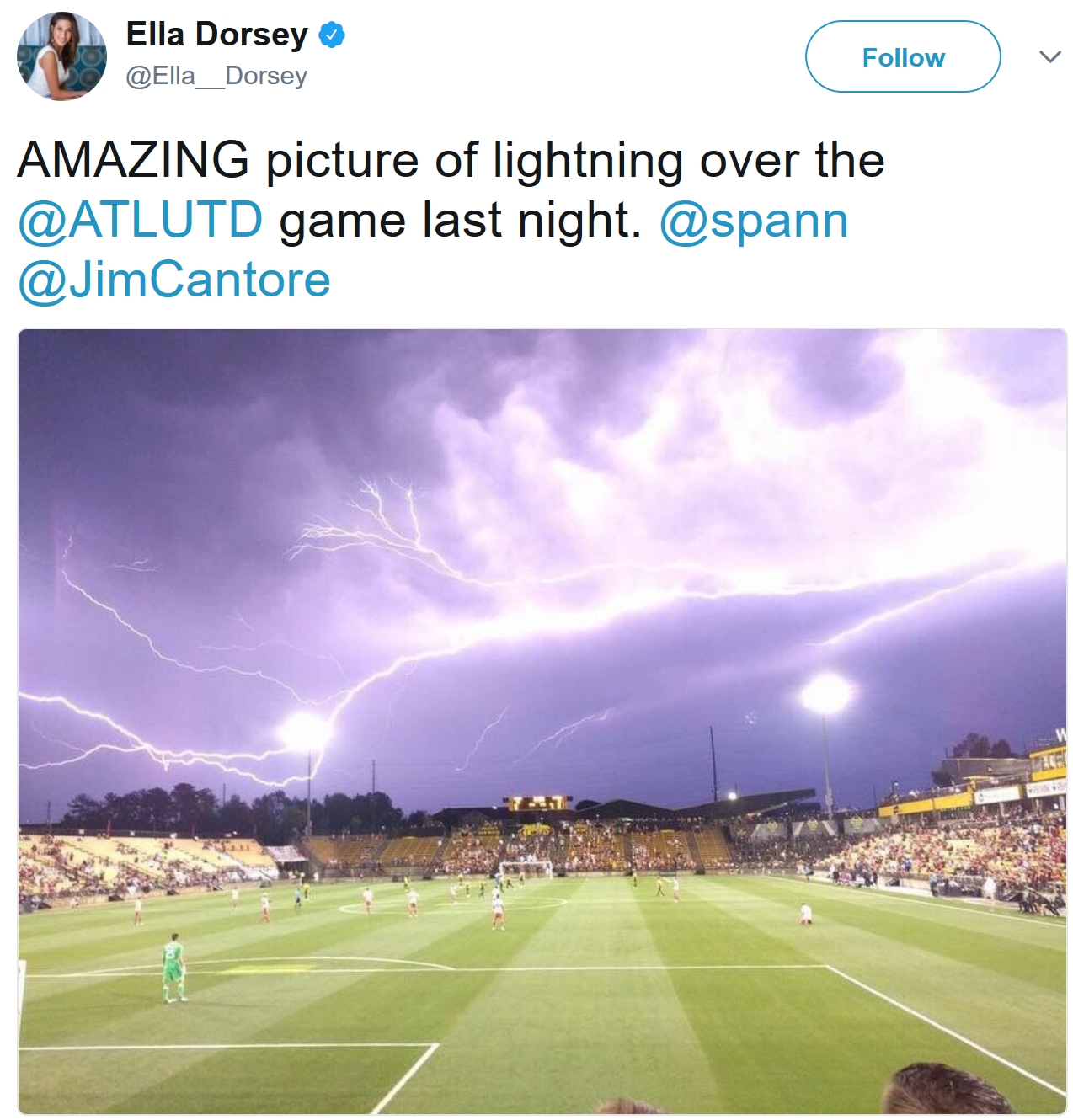 TODAY
TODAY: Some sun, PM showers and storms. Winds: SW 8-13. High: 78
SATURDAY NIGHT: Lingering showers, a few claps of thunder. Low: 60
SUNDAY: Windy and cooler, few showers and sprinkles. Winds: NW 10-20. High: 68
MONDAY: Sunny start, late day shower. Winds: NW 10-20. Wake-up: 56. High: 73
TUESDAY: More clouds than sun, less wind. Winds: NW 10-15. Wake-up: 59. High: 76
WEDNESDAY: Unsettled, passing shower possible. Winds: SE 7-12. Wake-up: 58. High: 75
THURSDAY: Hot and sticky. Few T-storms. Winds: S 10-15. Wake-up: 62. High: 88
FRIDAY: Partly sunny, breezy, a bit cooler. Winds: NW 8-13. Wake-up: 60. High: 78
Climate Stories...
Small Change in Average, Big Change in Extremes. There
is a strong and growing correlation between warming and more intense
precipitation events and hotter heat waves, as explained at
Climate Central: "...
To
understand what’s happening, we need to get a little geeky and take you
back to Stats class. The classic bell curve represents the distribution
of all temperatures at a location. The bulk of temperatures — those
close to average — sit near the middle of the curve. Record
temperatures, which are rare, sit on the fringes, with hot on right and
cold on the left. As the world warms from the increase in greenhouse
gases, the whole curve shifts to the warmer side, the right.
This shift results in a large jump in the number of extremely hot days
and a drop in the number of extremely cool days. It also means heat
records are more likely to be set than cold records. And it is these
extremes that impact our lives..."
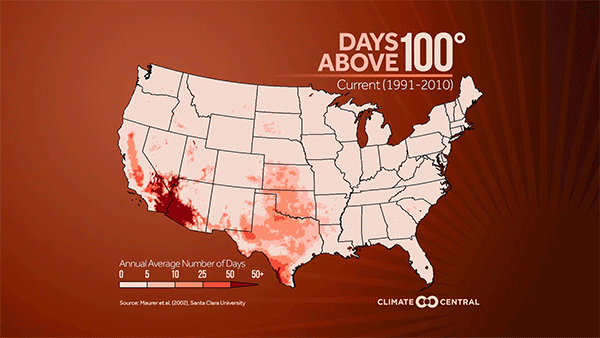

A GOP Congressman Is Forging Ahead on Climate Action.
Climate Central reports: "...
But
he’s also staking his political reputation on solving an issue nearly
verboten in the Republican-controlled Congress: climate change. He’s
called President Trump’s decision to yank the U.S. from the Paris Agreement
a mistake, introduced legislation to combat climate impacts and helped
create a bipartisan caucus all aimed at dialing back the partisanship
around one of the most pressing problems not just in the U.S., but in
the world. Whether he succeeds — or survives the 2018 midterms for that
matter — is very much up in the air, but his work represents one of the
few efforts toward climate action by Republicans on the national stage.
"For me, this is a local issue,” Curbelo told Climate Central last
month. “Most of the people in my district live near sea level and near
the sea. That’s how it first caught my attention. Then I started doing
my own research, I had a very enlightening meeting with NOAA experts,
and I realized it’s one of the greatest challenges...”
Photo credit: "
Carlos Curbelo speaking at the 2014 Conservative Political Action Conference (CPAC) in National Harbor, Maryland." Credit: Gage Skidmore/flickr.
Scientists Stunned by Antarctic Rainfall and a Melt Area Bigger Than Texas. Chris Mooney reports at
The Washington Post: "
Scientists
have documented a recent, massive melt event on the surface of highly
vulnerable West Antarctica that, they fear, could be a harbinger of
future events as the planet continues to warm. In the Antarctic summer
of 2016, the surface of the Ross Ice Shelf, the largest floating ice
platform on Earth, developed a sheet of meltwater that lasted for as
long as 15 days in some places. The total area affected by melt
was 300,000 square miles, or larger than the state of Texas, the
scientists report. That’s bad news because surface melting could work
hand in hand with an already documented trend of ocean-driven melting to
compromise West Antarctica, which contains over 10 feet of potential sea level rise..."
Map credit: "
Number of days in January 2016 when surface melt was detected from passive microwave satellite observations." (Julien Nicolas).
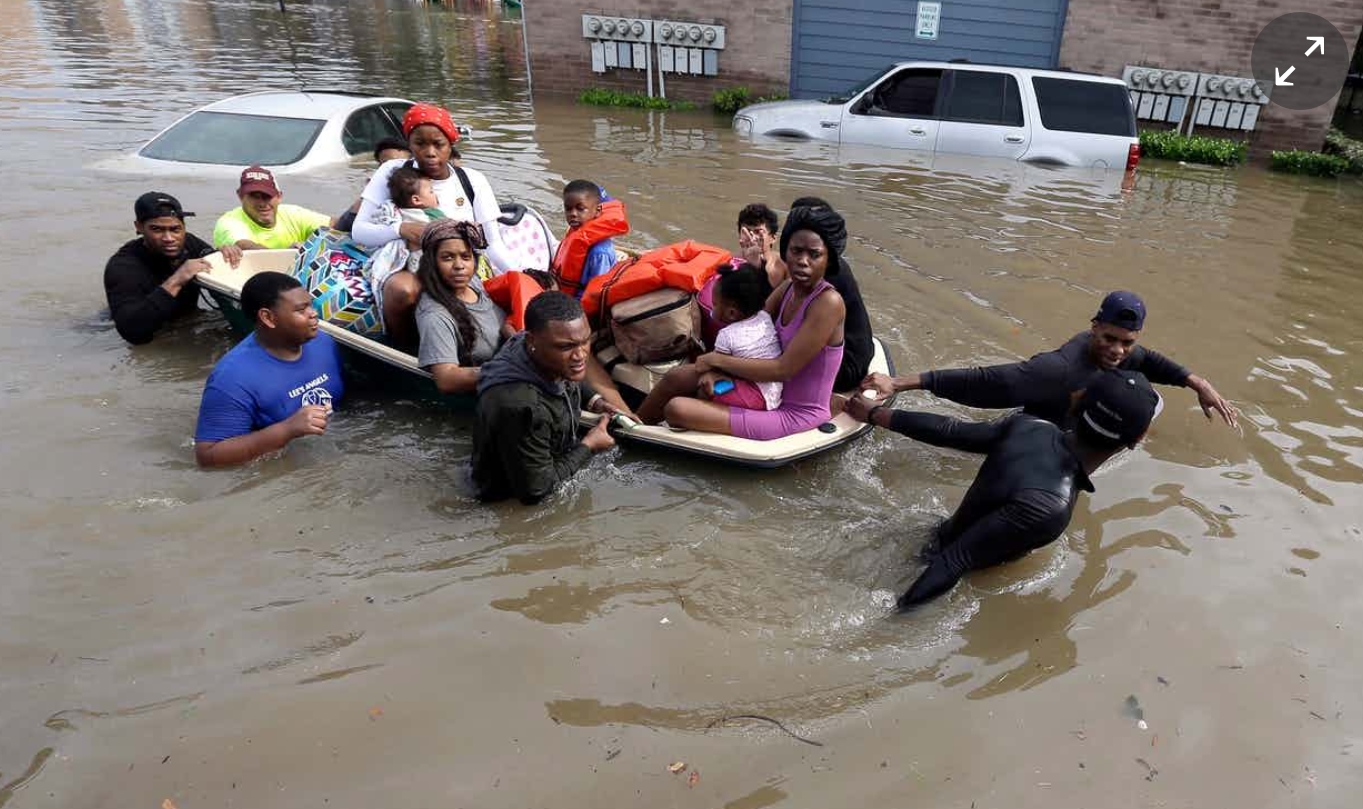 Houston Fears Climate Change Will Cause Catastrophic Flooding. "It's Not If - It's When". The Guardian reports: "...The Texas
metropolis has more casualties and property loss from floods than any
other locality in the US, according to data stretching back to 1960 that
Brody researched with colleagues. And, he said: “Where the built
environment is a main force exacerbating the impacts of urban flooding,
Houston is number one and it’s not even close.” Near the Gulf coast,
Houston is also at annual risk from hurricanes: it is now into the start
of the 2017 season, which runs from June to November. Ike, the last
hurricane to hit the Houston region, caused $34bn in damage and killed
112 people across several states in September 2008. There is little hope
the situation is going to get better any time soon
Houston Fears Climate Change Will Cause Catastrophic Flooding. "It's Not If - It's When". The Guardian reports: "...The Texas
metropolis has more casualties and property loss from floods than any
other locality in the US, according to data stretching back to 1960 that
Brody researched with colleagues. And, he said: “Where the built
environment is a main force exacerbating the impacts of urban flooding,
Houston is number one and it’s not even close.” Near the Gulf coast,
Houston is also at annual risk from hurricanes: it is now into the start
of the 2017 season, which runs from June to November. Ike, the last
hurricane to hit the Houston region, caused $34bn in damage and killed
112 people across several states in September 2008. There is little hope
the situation is going to get better any time soon..."
File photo credit: "
Houston has more casualties and property loss from floods than any other locality in the US." Photograph: David J Phillip/AP.
Climate Change Deniers Aren't Tired of Winning Yet. A story at
New Republic traces the playbook for those with a vested interest in climate-related misinformation: "...
But
two months in, some prominent members of the denier community began to
worry. “We have a problem,” Ebell said at a March conference for the
Heartland Institute, an organization dedicated to discrediting climate
science. “Swamp creatures are still [at the White House]. They are
trying to infiltrate the administration. And some of them are
succeeding.” Alarmed by Trump’s indecision on Paris, Ebell’s
organization—the Competitive Enterprise Institute, which is partly
funded by coal companies—began running television ads pressuring Trump
to exit. Paris wasn’t the only issue raising alarms, as several members
of Ebell’s EPA transition team expressed concerns
about Pruitt. They complained that he wasn’t speaking strongly enough
against climate science; wasn’t acting quickly enough to repeal
regulations; and had not acted to undo the EPA’s categorization of
carbon dioxide as a pollutant. Breitbart’s James Delingpole—one of the most prolific anti-environmentalist trolls on the internet—tore into Pruitt and Trump for not being aggressive enough in rejecting climate science, and even suggested Pruitt consider resigning..."
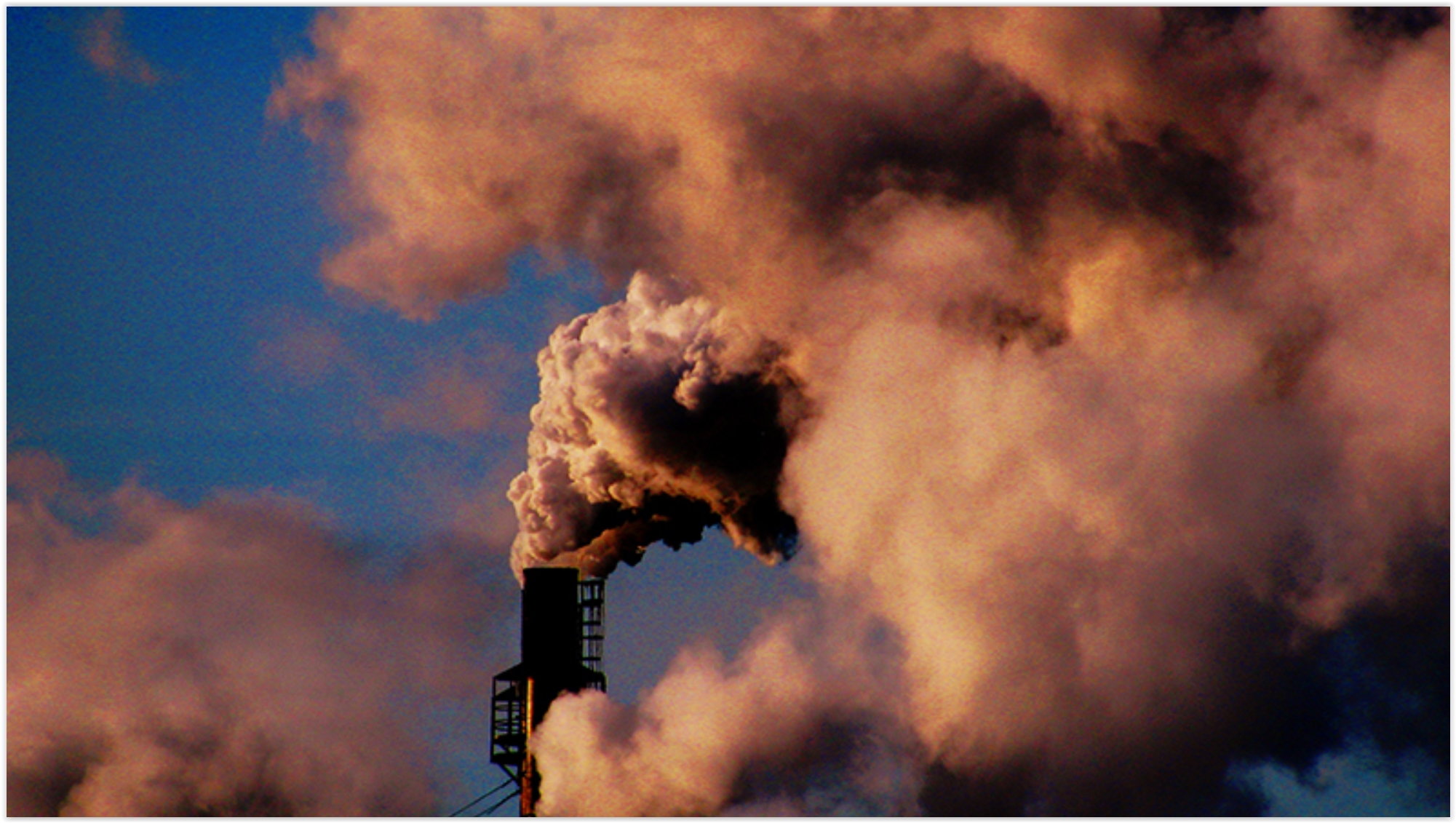 315 Gigatons of Man-Made CO2; Half Of That Released Since 1986
315 Gigatons of Man-Made CO2; Half Of That Released Since 1986. A new paper at
Climate Change caught my eye; here's an excerpt of the abstract: "
This
paper presents a quantitative analysis of the historic fossil fuel and
cement production records of the 50 leading investor-owned, 31
state-owned, and 9 nation-state producers of oil, natural gas, coal, and
cement from as early as 1854 to 2010. This analysis traces emissions
totaling 914 GtCO2e—63 % of cumulative worldwide emissions of industrial CO2
and methane between 1751 and 2010—to the 90 “carbon major” entities
based on the carbon content of marketed hydrocarbon fuels (subtracting
for non-energy uses), process CO2 from cement manufacture, CO2 from flaring, venting, and own fuel use, and fugitive or vented methane. Cumulatively, emissions of 315 GtCO2e have been traced to investor-owned entities, 288 GtCO2e to state-owned enterprises, and 312 GtCO2e to nation-states. Of these emissions, half has been emitted since 1986..."
File photo: Billy Wilson, flickr.

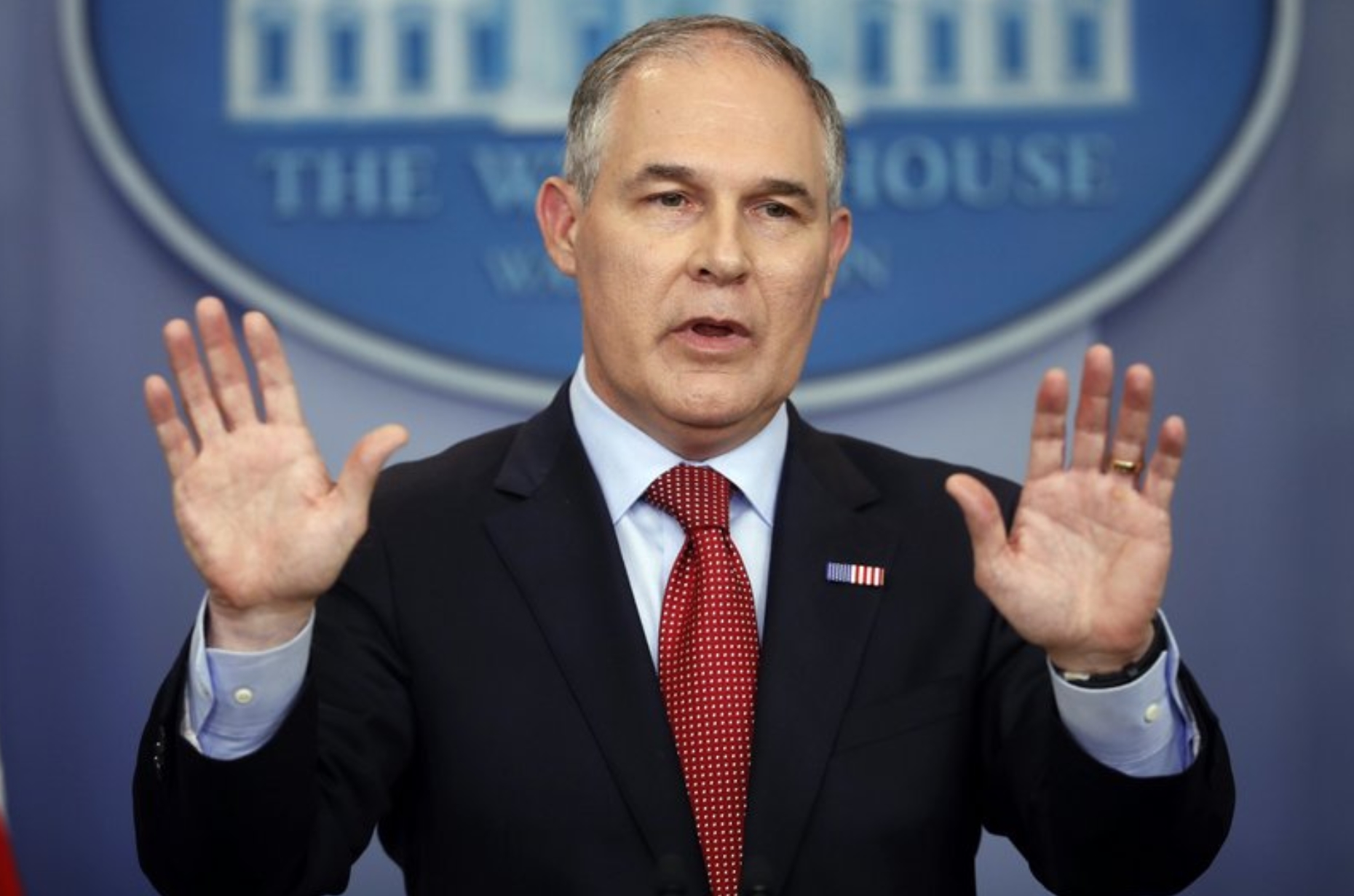 E-mails Reiterate EPA Chief's Ties to Fossil Fuel Interests
E-mails Reiterate EPA Chief's Ties to Fossil Fuel Interests. Here's an excerpt from the
AP: "
Newly
obtained emails underscore just how closely Environmental Protection
Agency chief Scott Pruitt coordinated with fossil fuel companies while
serving as Oklahoma’s state attorney general, a position in which he
frequently sued to block federal efforts to curb planet-warming carbon
emissions. The latest batch of Pruitt’s emails, provided to The
Associated Press on Thursday, runs more than 4,000 pages. They include
schedules and lists of speaking engagements from the years before Pruitt
became the nation’s top environmental watchdog, recounting dozens of
meetings between Pruitt, members of his staff, and executives and
lobbyists from the coal, oil and gas industries. Many of the calendar
entries were blacked out, making it impossible for the public to know
precisely where Pruitt traveled or with whom he met..."
Water and U.S. National Security. People
can live without a lot of things, but water isn't one of them. You
think mass migrations are overwhelming now? Give it a few years. Here's a
post at War Room, at the
United States Army War College: "...
Fresh
water has long been a vital and necessary natural resource, and it has
long been a source of tension, a military tool, and a target during war.
The links between water and conflict have been the subject of extensive
analysis for several decades, beginning with the development of the literature on “environmental security” and water conflicts in the late 1980s and early 1990s. In coming years, new factors, including rising populations, industrial and agricultural demand for water, human-induced climate change,
and political uncertainties make it increasingly urgent that solutions
to water tensions be found and implemented. The failure to address water
problems through diplomacy will lead to new and growing security risks,
including for the U.S. The U.S. and its allies must develop and employ a
wide variety of instruments to reduce instability and the risk of
conflict related to growing water problems, before military intervention
is needed..."
Climate Change in Schools Where It's "Fake News". Turns out in many school districts the kids should be teaching the teachers, at least when it comes to climate science.
CNN.com reports: "...
Although
97% of climate scientists agree that global warming is linked to the
burning of fossil fuels, a majority of middle and high school teachers
are not aware of this consensus. Many of these teachers teach climate
change as if it were an ongoing debate within the scientific community.
This disconnect between scientists and educators was captured in a recent survey
(PDF) by the National Center for Science Education, a nonprofit that
works to promote science over ideology. "Our survey found that
relatively few teachers had even a college course that devoted as much
as a single class to climate change," said Glenn Branch, the center's
deputy director, who notes that many teachers present misinformation
about climate change or avoid teaching it entirely..."
File image: Shutterstock.
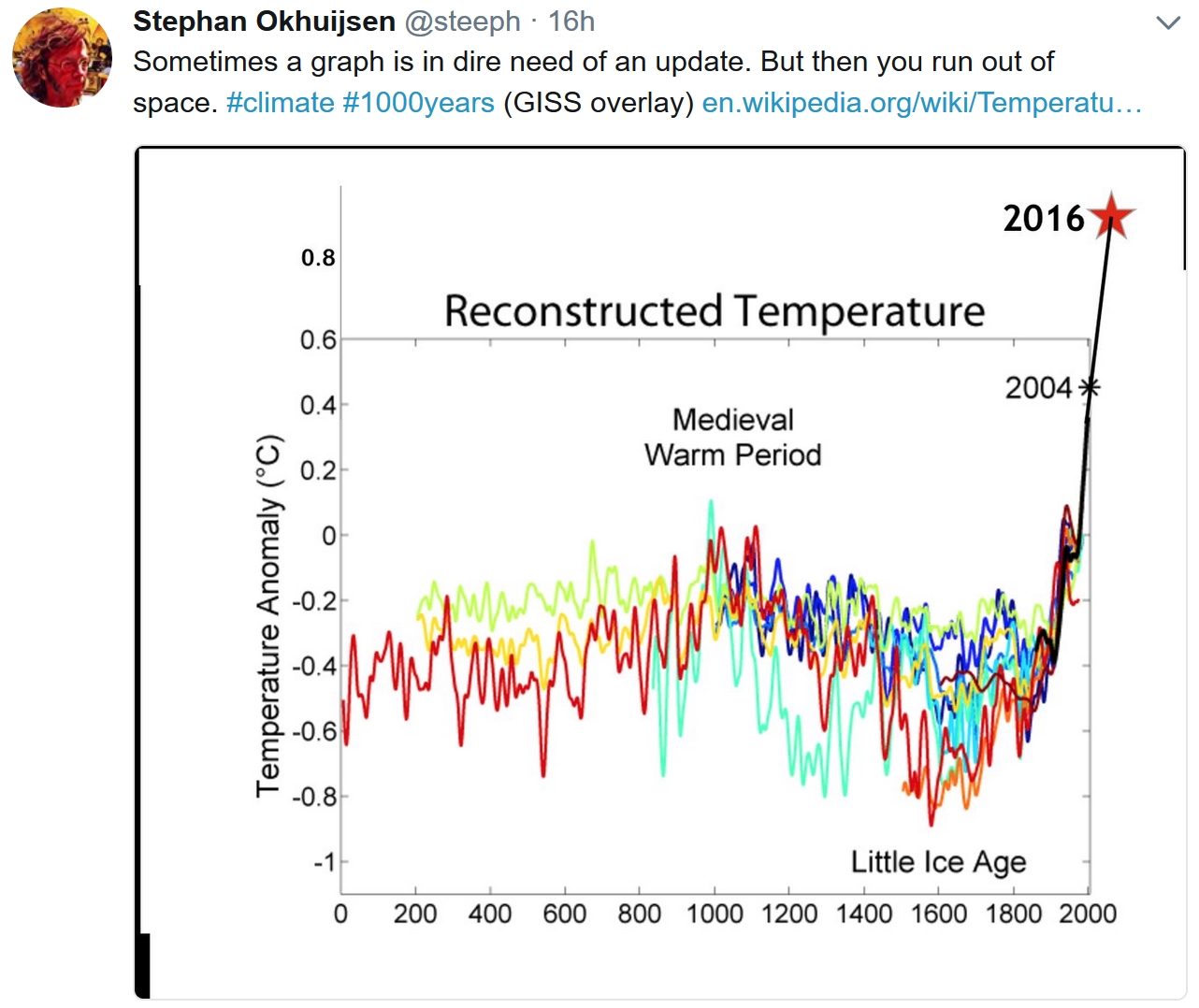
Delray (Florida) To Put Climate Change at Forefront: "The Waters Are Coming". Here's an excerpt from
PalmBeachPost.com: "...
Miami
Beach will soon embark on an ambitious $100 million project to raise
roads, install pumps and water mains and redo sewer connections to
combat flooding, according to the Miami Herald.
That could be in store for Delray Beach a decade down the line,
commissioners said. The effects of rising tides are already presenting
themselves in Delray Beach, according to city staff. Delray’s Marina
Historic District along the Intracoastal Waterway sees damaging floods during high tides.
And the city’s freshwater aquifers have already experienced saltwater
intrusion that will require action within a year, said John Morgan, who
heads the city’s environmental services department. The city is planning
both long-term and immediate actions to adapt to global climate change..."
File photo: Lynne Sladky, AP.
The Dutch Have Solutions to Rising Seas. The World is Watching. It's both a threat - and an opportunity. Here's an excerpt from
The New York Times: "...
Mr.
Ovink is the country's globe-trotting salesman in chief for Dutch
expertise on rising wawter and climate change. Like cheese in France or
cars in Germany, climate change is a business in the Netherlands. Month
in, month out, delegations fromm as far away as Jakarta, Ho Chi Minh
City, New York and New Orleans make the rounds in the port city of
Rotterdam. They often end up hiring Dutch firms, which dominate the
global market in high-tech engineering and water management..."
Photo credit: Josh Haner.
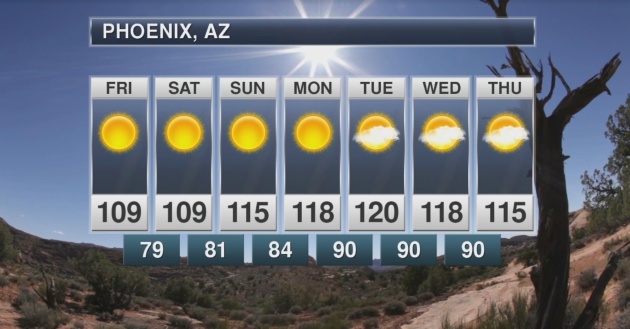
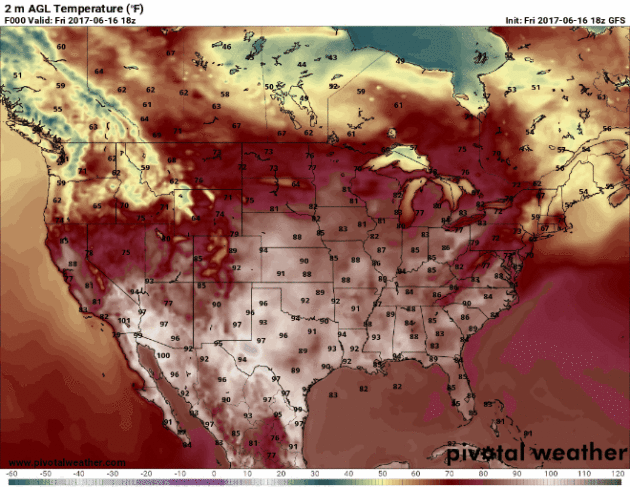
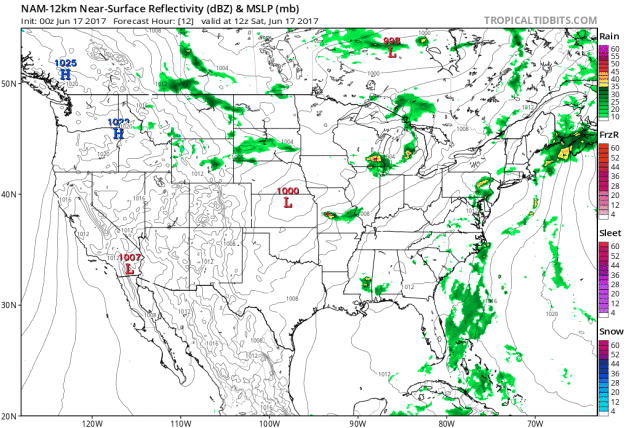
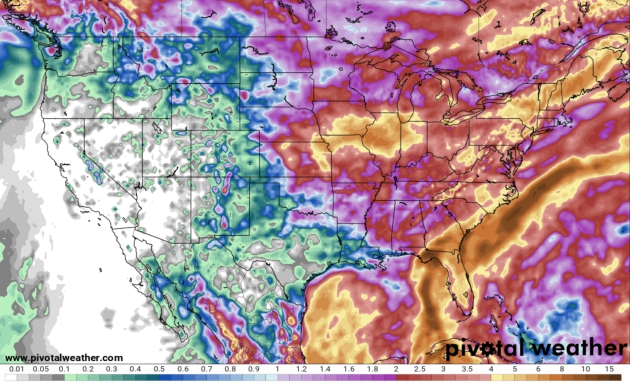
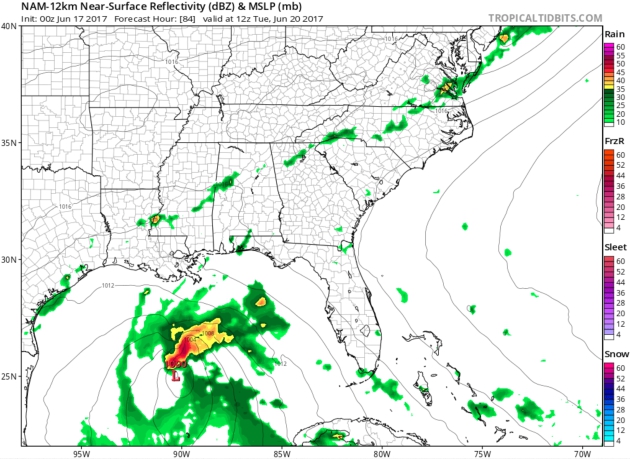
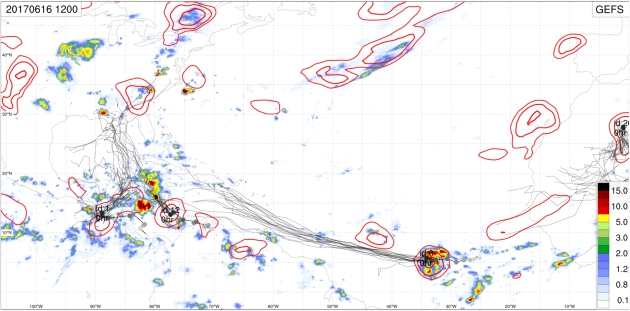


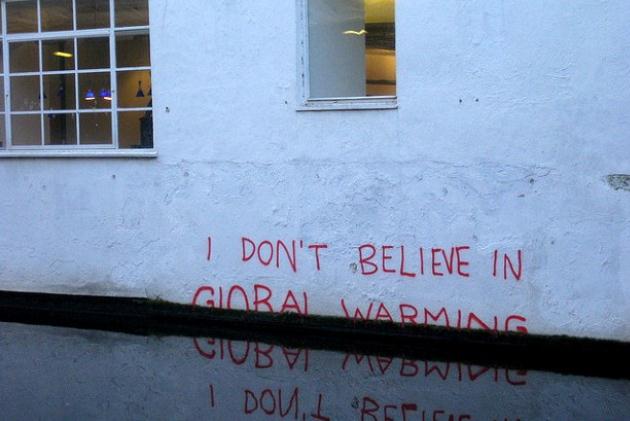
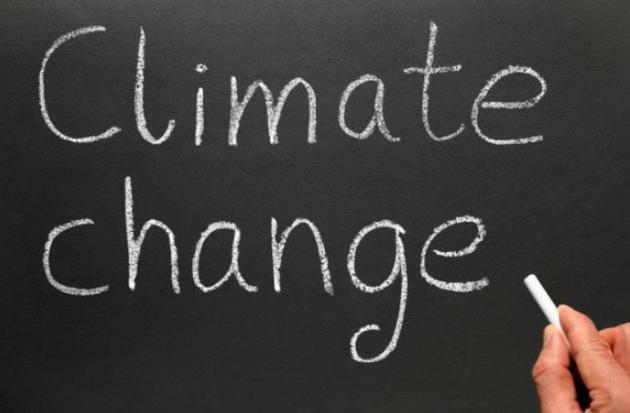
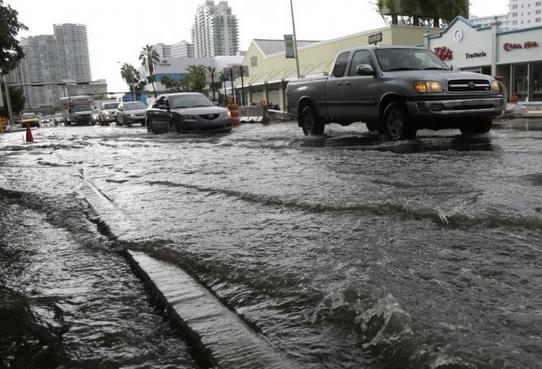
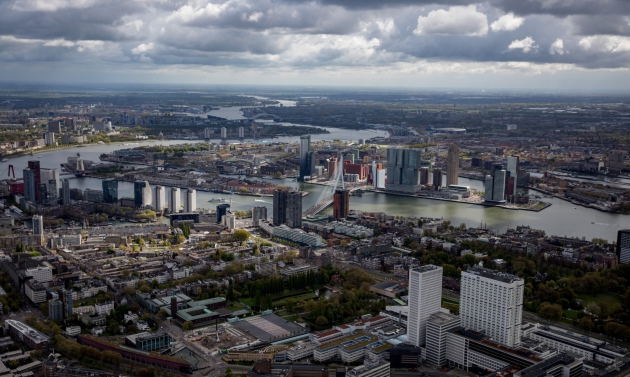
No comments:
Post a Comment